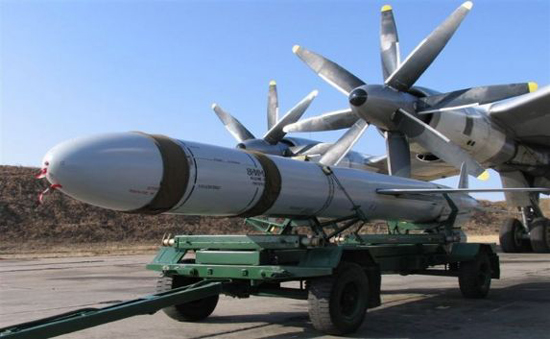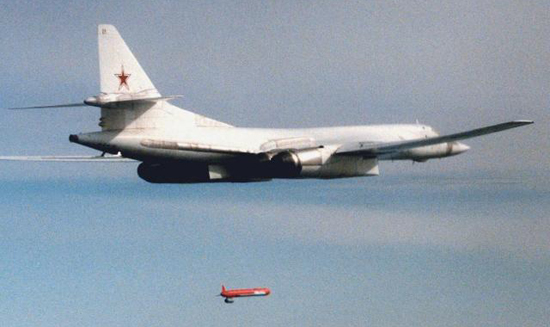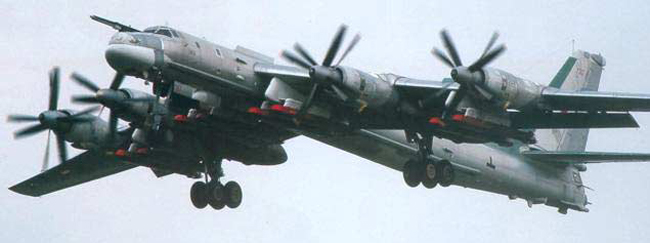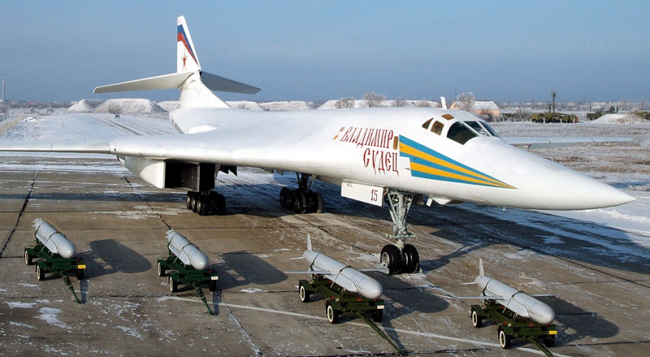
Russia will increase its number of cruise missiles by 30 times by the end of the current decade, Defense Minister Sergei Shoigu said Friday. “We will boost the number of cruise missiles fivefold in the next three years and by 30 times by 2020,” Shoigu told reporters after a meeting of Russia’s Security Council. Are there new cruise missiles in the Russian pipeline and who will operate them?
Most of the cruise missiles developed by the Russians during the Cold War were aimed at fixed strategic targets, such as command centers, radars and missile bases. Naval strike missiles were aimed at ‘decapitating’ enemy forces striking at aircraft carrier. Such missiles were heavy, fast and ‘strategic’. For the 21st century the Russian military will need tactical cruise missiles, similar to those the US and European armies are deploying now – conventionally armed weapons capable of striking targets at very long range, with pinpoint accuracy. Weapons such as the tactical Tomahawk, Storm Shadow or SCALP, and Taurus, have been used since 1991 in almost all conflicts, providing countries with extended operational capability the Russians could not easily duplicate with their current assets. The Russians already have several designs offered for export, including variants of the Club cruise missile, developed for submarines and coastal defense. Other weapons are the Kh55 class air-launched cruise missiles, designed for aerial platforms. The newest version is the the Kh101 developed by Raduga OKB.
In a recent interview published at the Moscow Times Ilya Fyodorov, managing director of jet engine producer NPO Saturn noted “We plan to produce over 1,500 such engines per year”, commenting on a recently signed agreement with Raduga, too manufacture cruise missile engines worth 4 billion rubles ($120 million). Previous engines for strategic nuclear missiles were mostly made by Ukrainian manufacturer Motor Sich. The current contracts cover the period through 2015
“Strategic air and sea-based missiles should not depend on other countries, even friendly states, for major parts supply. So we are now organizing local engine production,” Fyodorov said. He also said that the price of the new engine will be competitive with the Ukrainian equivalent while having better performance results in terms of fuel consumption and weight, which means missiles equipped with it will be able to travel longer distances.
[nonmember]Full version of this article is open for members[/nonmember][ismember]

In 2006, Jane’s suggested that Russia had 872 operational Kh-55 missiles with the long-term goal of 500 nuclear armed missiles. These accounted for 13 Tu-160 ‘Blackjack’ bombers carrying 12 Kh-55SM (or Kh-555) missiles each; 32 Tu-95MS6 BEAR F which can carry six such cruise missiles and 31 Tu-95MS16 which can carry 16 Kh-55 missiles each.
Russia currently fields several types of cruise missiles in air- and sea-launched variants. Most common are the Kh55 (NATO code name AS-15 ‘KENT’, also known under the Russian designation Izdeliye), a weapon built by Raduga OKB, similar to the U.S. Tomahawk, used in different variants. The current model used by the Russian Air Force is the Kh-55SM, offering a strike range in excess of 3,000 km. Using terrain matching guidance (TERCOM) techniques for navigation, their strike accuracy about 30 meters. These weapons were developed in the 1970s and 50 years later they are still in operation. The end of the Cold War left Ukraine with 1,612 of these missiles, half of which were destroyed and about 580 returned to Russia. 12 ended up in Iran and China.[/ismember]
The Russian Air Force said last year that it would accept into service in 2013 the new Kh-101 cruise missile, also built by Raduga. This new weapon will be available in two variants – conventional and nuclear armed. Kh-101/102 was developed as a stealthier, more accurate successor of Kh55SM. Unlike its predecessor, the turbojet engine is recessed inside the fuselage, significantly reducing drag and radar signature. The Kh-101 is equipped with a conventional warhead while the Kh-202 carries a nuclear warhead. Its warhead weigh 400 kg (880 pounds) twice the size of the Kh-555. The ranges of Kh-101 is 3,500 – 5,000 km with accuracy of 10 meters. It will employ an inertial navigation system assisted by the Russian satellite based navigation network GLONASS.
[ismember]

But the Kh-101 will not enable the Russian Air Force to increase its cruise missile strike capability (number of aircraft capable of carrying missiles) but only the potential (number of strikes in the inventory). While the Kh-101 is designed to strike targets at higher precision and longer range, the number of platforms carrying the missiles or the number of weapons carried by each platform will not be changed. The new missile will be carried by the Tu-95MS and Tu-160, while Tu-22M3 will retain the Kh-555 missiles. It is also assumed that some of the aircraft employed by the Russian long-range aviation will also begin to operate with cruise missiles – including the units currently being equipped with the Su-34 FULLBACK.[/ismember]
However, additional surface and submarine-launched weapons will be joining the fleet and could be accounted for as ‘cruise weapons’. These include anti-ship weapons like the Moskit / BRAHMOS and Yakhont being fielded with surface and coastal defense systems.

















